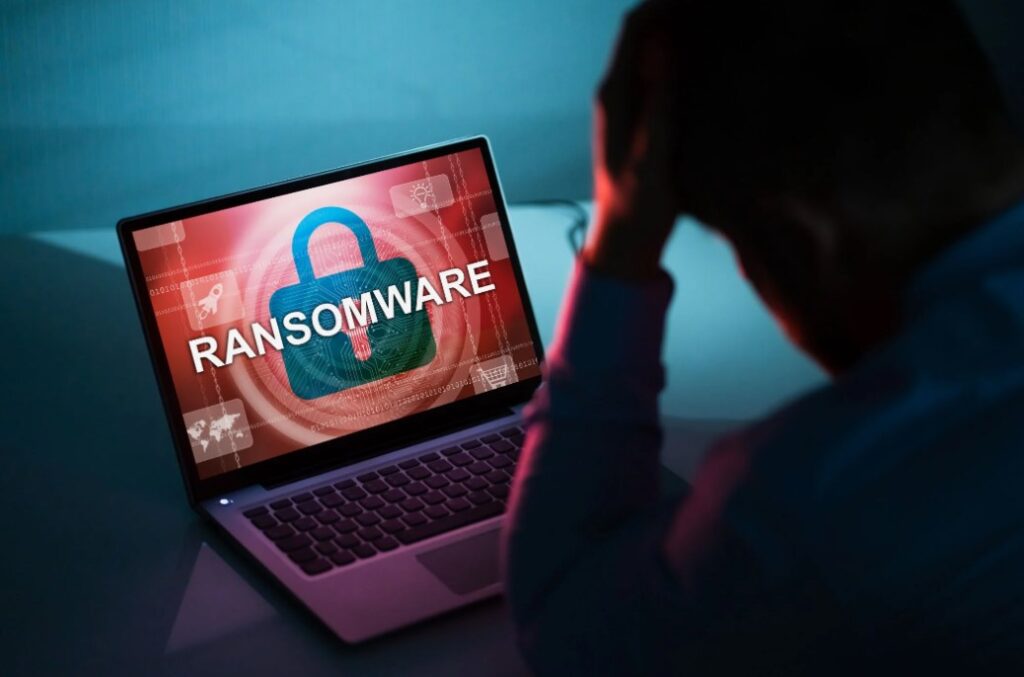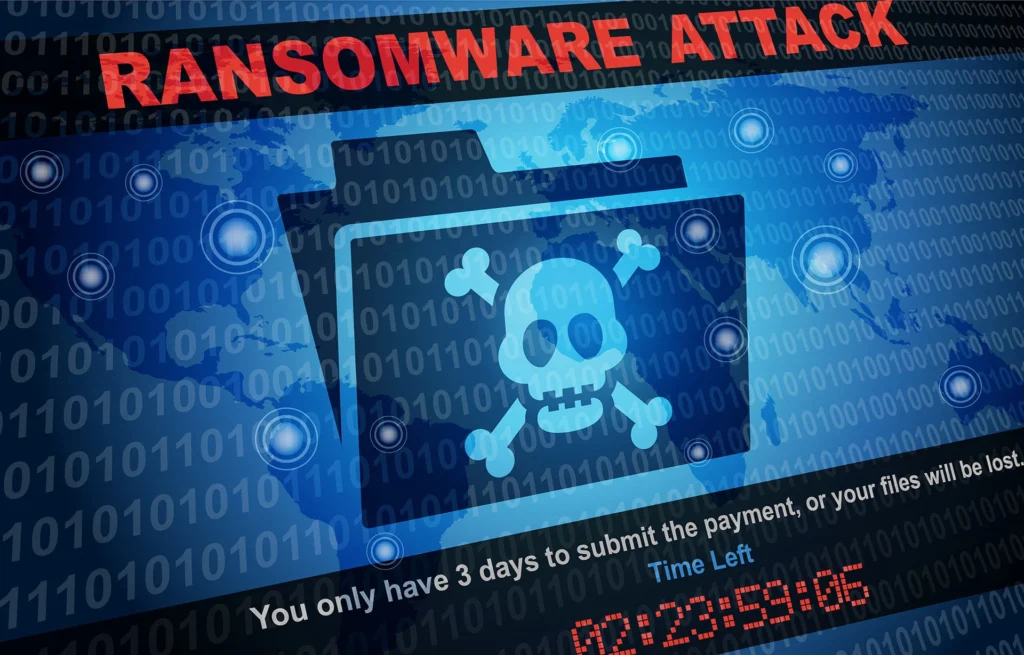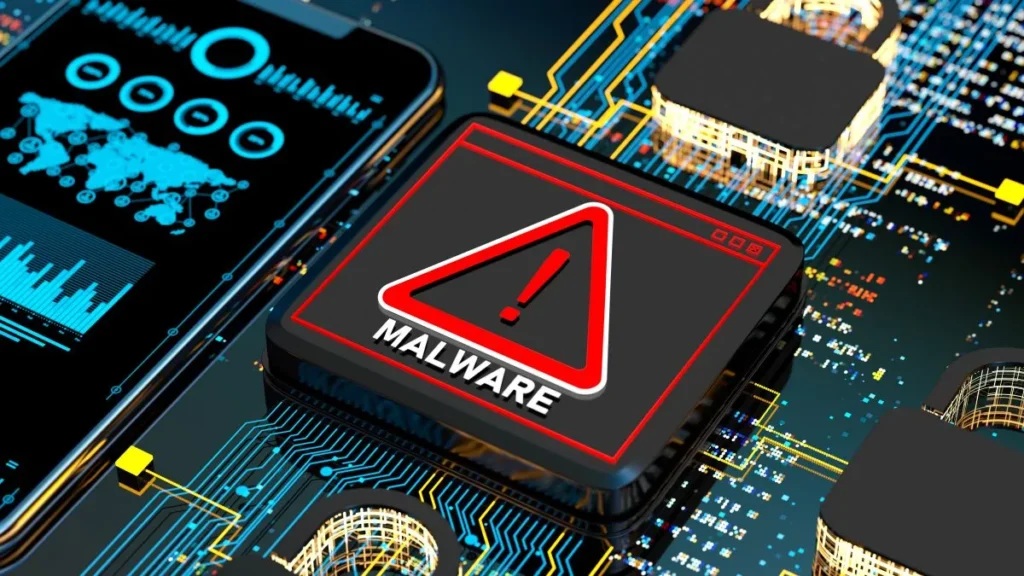In our increasingly digital world, data is a valuable asset for businesses and individuals. Unfortunately, cybercriminals are capitalizing on this value by conducting ransomware attacks, which encrypt and keep data captive until a ransom is paid.
In this detailed guide, we will walk you through the crucial measures to take if your data is the victim of a ransomware attack. You can protect your important information and reduce the impact of an incident by identifying risks and being ready.
What Is Meant by Ransomware, and How Does It Work?

Source: coeosolutions.com
Ransomware is a kind of malicious software that encrypts data or locks users out of their devices, forcing victims to pay a ransom to unlock or recover access to their data. Individuals and corporations must understand this notion to defend themselves against this growing threat.
1. The Concept of Ransomware
Ransomware encrypts the victim’s data using a complicated algorithm, scrambling the data into an unusable state. To restore access to their data, the victim must receive the decryption key, which the cyber thieves keep. Once the victim’s screen has been encrypted, the ransomware shows a ransom letter describing the situation and offering payment instructions.
2. Locker-based Ransomware vs. Encryption-based
There are two main types of ransomware:
- Encryption-based ransomware ─ This ransomware encrypts the victim’s data, rendering them unavailable until the ransom is paid. Encryption is generally strong and virtually impossible to break without the decryption key, which easily holds.
- Locker-based ransomware ─ Unlike encryption-based ransomware, it does not encrypt data. Instead, it locks users out of their computers, preventing them from accessing the desktop or vital apps. This sort of ransomware is usually more straightforward, yet it may still need help.
3. Ransomware Spread and Prevalence
Ransomware may damage systems in a variety of ways, including:
- Malvertising ─ Malicious website advertisements may direct viewers to ransomware-infected sites, prompting unintentional downloads.
- Phishing emails ─ Cybercriminals often employ phishing emails to spread ransomware. These emails may include malicious attachments or links that, when opened, install the ransomware on the victim’s device.
- Remote desktop protocol (RDP) attacks ─ Attackers target vulnerable RDP credentials to obtain unauthorized computer access and install ransomware.
- Exploit kits ─ Exploit kits are used by cybercriminals to exploit weaknesses in software or operating systems to install ransomware covertly.
Identifying a Ransomware Attack

Source: bitlyft.com
Ransomware attacks may be serious, but detecting them early can help reduce their damage. Understanding the indications of a ransomware attack, the common ransom demands, and the many varieties may enable people and organizations to act quickly and safeguard their data.
Recognizing Ransomware Infection Signs
- File encryption ─ Ransomware encrypts files, turning them unreadable. An unusual file extension or trouble opening files may indicate a ransomware attack.
- Ransom note ─ Ransomware often shows a ransom note on the victim’s screen, describing the situation, payment instructions, and a way to retrieve the decryption key.
- Altered file names ─ Ransomware may change the names of encrypted files to random characters or add specified extensions.
- Desktop lockout ─ Locker-based ransomware may encrypt devices, making it impossible for users to access desktops and essential applications.
Understanding Ransom Payment Methods and Demands
- Ransom demands ─ Ransomware may vary from a few hundred to several thousand dollars, with some attacks requiring payment in cryptocurrency, such as Bitcoin, to keep cyber criminals anonymous.
- Limited timeframes ─ Attackers often demand strict payment deadlines, threatening to delete the decryption key or raise the ransom amount if the ransom is not paid within the stipulated time frame.
- No guarantee ─ The ransom payment does not ensure hackers supply the decryption key or unlock the system; victims have paid but have not gotten the promised solution.
How to Handle a Ransomware Attack
Ransomware attacks may occur at any time, building fear and difficulties. Knowing what initial measures to take may make a significant difference in reducing the effect of the attack and saving valuable data. Here’s how to handle a ransomware attack in your organization:
Don’t Pay the Ransom
While paying the ransom to restore access to your data swiftly may be tempting, professionals and law enforcement authorities strongly warn against it.
Paying the ransom not only encourages hackers to continue their operations but also does not ensure that the decryption key will be delivered or that the attackers will not strike again. Ransomware recovery is a complex process that doesn’t rely solely on ransom payments.
Isolate Infected Systems

Source: sentreesystems.com
Disconnect damaged PCs and servers from the network immediately. Make sure WiFi connections are also turned off. Disconnect storage devices before they get infected if you are unsure whether front-end assets are attacked or if the ransomware is still actively spreading and encrypting data.
Rebooting, installing updates, or performing maintenance on affected workstations may result in irreversible data loss or harm.
Report the Attack
For various reasons, reporting the ransomware assault to law enforcement and appropriate cybersecurity agencies is critical. It helps in the tracking of cyber criminals, the gathering of evidence, and the possible assistance with decryption or other recovery procedures. Contact your local law enforcement agency or cyber incident response team for advice on continuing the report.
Notify Relevant Stakeholders
Inform all key stakeholders, including workers, customers, and business partners, about the ransomware assault. Transparency is critical for retaining confidence and efficiently handling the problem. Give them instructions on managing any suspicious communications connected to the attack.
Install Anti-Malware Software

Source: venturebeat.com
These tools scan your whole system for known ransomware code strings so that IT managers may clean the network of any traces of the infection. Anti-malware software does not decrypt infected files, but it does notify IT of the existence of ransomware and helps prevent infection spread.
Restore Data from Backups
If you have clean versions of your files and databases safely stored offline, use data backups to recover your systems to the most recent possible state before the attack. Some kinds of ransomware require a complete reformat of storage media and a reinstall of the operating system and all applications to ensure all code is removed. After the ransomware has been eliminated, reset all system passwords.
Strengthen Security Measures
Use the incident to reevaluate and reinforce your organization’s cyber security procedures. Implement extra layers of security, provide staff security training, and verify that all systems are up to date with the most recent security updates.
Conclusion
Ransomware attacks are a danger to data security. It is vital to be knowledgeable and prepared to minimize the consequences of such an incident.
You may boost your chances of surviving an attack with ransomware by establishing proactive cybersecurity measures, cultivating a security-conscious culture, and obtaining expert assistance. Regarding ransomware, remember that prevention is always better than cure; keep attentive and protected.



